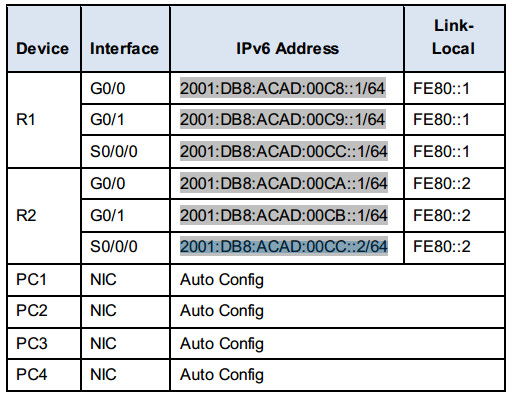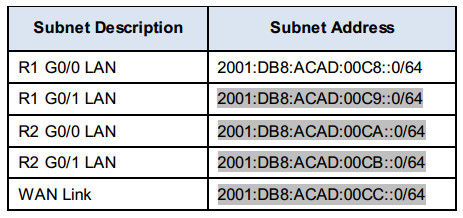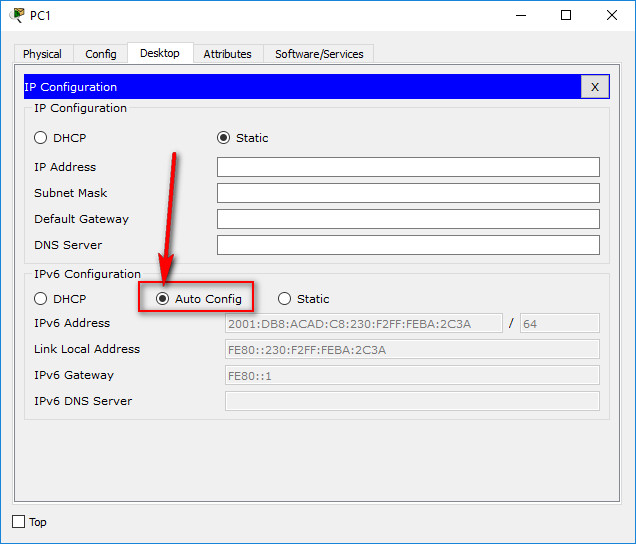8.3.1.4 Packet Tracer – Implementing a Subnetted IPv6 Addressing Scheme Answers (Instructor Version – Optional Packet Tracer)
Topology

Addressing Table

Objectives
Part 1: Determine the IPv6 Subnets and Addressing Scheme
Part 2: Configure the IPv6 Addressing on Routers and PCs and Verify Connectivity
Scenario
Your network administrator wants you to assign five /64 IPv6 subnets to the network shown in the topology. Your job is to determine the IPv6 subnets, assign IPv6 addresses to the routers, and set the PCs to automatically receive IPv6 addressing. Your final step is to verify connectivity between IPv6 hosts.
Part 1: Determine the IPv6 Subnets and Addressing Scheme
Step 1: Determine the number of subnets needed.
Start with the IPv6 subnet 2001:DB8:ACAD:00C8::/64 and assign it to the R1 LAN attached to GigabitEthernet 0/0, as shown in the Subnet Table. For the rest of the IPv6 subnets, increment the 2001:DB8:ACAD:00C8::/64 subnet address by 1 and complete the Subnet Table with the IPv6 subnet addresses.
Subnet Table

Step 2: Assign IPv6 addressing to the routers.
a. Assign the first IPv6 addresses to R1 for the two LAN links and the WAN link.
b. Assign the first IPv6 addresses to R2 for the two LANs. Assign the second IPv6 address for the WAN link.
c. Document the IPv6 addressing scheme in the Addressing Table.
Part 2: Configure the IPv6 Addressing on Routers and PCs and Verify Connectivity
Step 1: Configure the routers with IPv6 addressing.
Note: This network is already configured with some IPv6 commands that are covered in a later course. At this point in your studies, you only need to know how to configure IPv6 address on an interface.
Configure R1 and R2 with the IPv6 addresses you specified in the Addressing Table and activate the interfaces.
Router(config-if)# ipv6 address ipv6-address/prefix Router(config-if)# ipv6 address ipv6-link-local link-local
Step 2: Configure the PCs to automatically receive IPv6 addressing.
Configure the four PCs for autoconfiguration. Each should then automatically receive full IPv6 addresses from the routers.
Step 3: Verify connectivity between the PCs.
Each PC should be able to ping the other PCs and the routers.
Suggested Scoring Rubric


